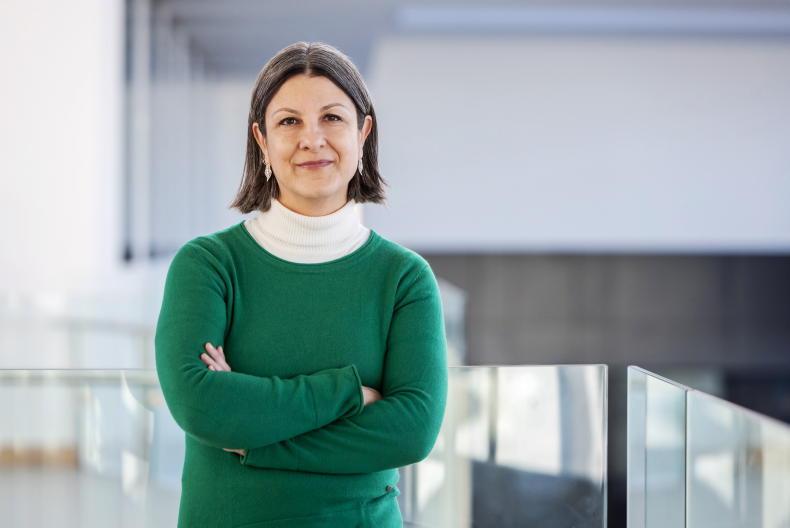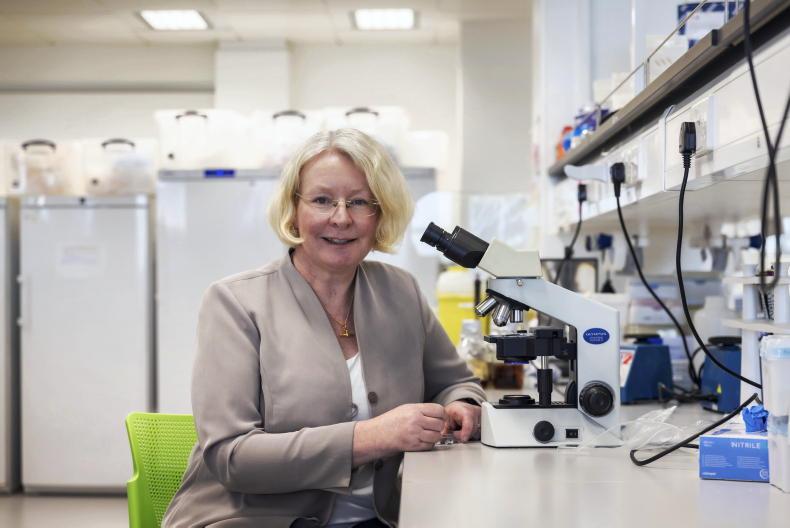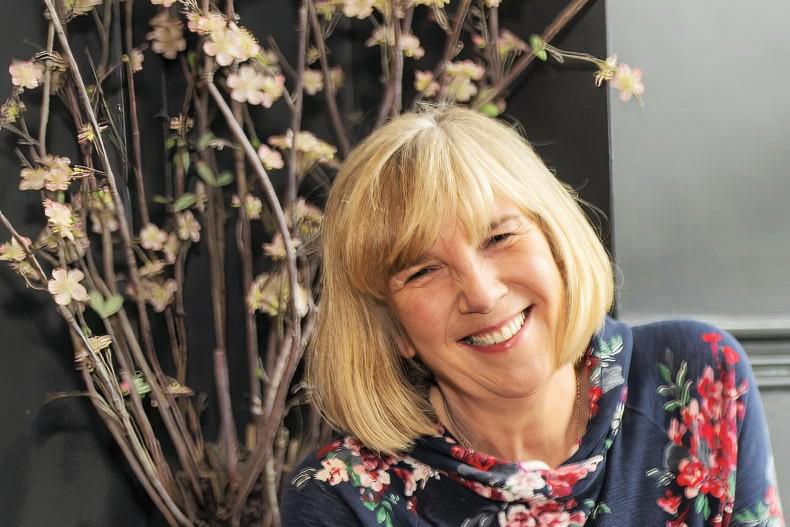As the patron saint of livestock and dairy production – and being purported as an expert beer brewer – we can be certain St Brigid spent ample time in the tillage fields of her day. But what did tillage fields look like in the 5th century when she was alive?
Archaeologist and University College Dublin (UCD) associate professor Meriel McClatchie has an idea. As an archaeobotanist, she has spent her career studying the plants of our past and our relationship to them. Through this work, you can also get an excellent idea of what we were growing in our fields.
“It’s quite a specialist area, archaeobotany,” she explains. “[Over time], most plant material will degrade and you won’t find traces, but sometimes it can become preserved and recovered by archaeologists.
“You start to see the important crops at different times, which builds up that deep history of farming in Ireland. We have a good idea of what farming looked like in the past and can actually start using this important information to see what we want farming to look like in the future.”
Past crops
Meriel tells Irish Country Living that in Ireland’s past, crops like peas, rye and Emmer wheat were much more widely grown than they are today.
“[Emmer wheat] was the main crop of the first farmers in Ireland and then it fell out of fashion when bread wheat came in,” she explains. “But it’s resilient and still grown in parts of Ireland. Rye was grown much more widely in the past, including in southern and western Ireland, while peas are a bit more restricted but were still grown in many areas.
“Farmers were growing crops in Ireland as far back as 6,000 years ago, but they were different varieties and there was a lot of diversity. We don’t have that diversity anymore. This is important, particularly as we face challenges from climate change and environmental degradation. Crop diversity is at the centre of adaptive strategies for tackling climate change and we think looking at our ancient crops can help us approach this.”

An example of 3000 year old preserved Emer wheat which was recovered from a fire pit site / Meriel McClatchie
CROPREVIVE
With this in mind, Meriel and UCD plant scientist, Dr Sónia Negrão, have launched a new Irish Research Council (IRC) Coalesce-funded project entitled CROPREVIVE.
The research project aims to determine how Emmer wheat, peas and rye became underutilised, and how they can be revived. Their team at UCD includes another archaeologist, Adam Collins, and an agronomist, Sofía Vargas Sielfeld. They are currently mapping the locations where these crops were produced in the past and comparing this with where the crops are grown today. The end report will be submitted to the Department of Agriculture, Food and the Marine (DAFM) and will be accessible as part of a larger Europe-wide network of similar research.
Hopeful future
Timing the project’s launch with St Brigid’s Day is no coincidence. St Brigid embodies strength and resilience within the agricultural sphere. This project could lead the way for more cross-sectional research and help inform future agricultural policy. Aside from the archaeological and data-driven research being conducted, the CROPREVIVE research team are also working in real time with Irish farmers.
“Some people are still growing these crops,” Meriel says, “so what are their reasons for doing this? What are the barriers to increased and more widespread production? Part of our work is engagement with farmers through interviews, and we’re finding farmers are interested [in the project].”

Dr Sónia Negrão is a plant scientist. Her research looks at crop resilience in the face of climate change / Ste Murray
More recent history can also help us understand why some crops go out of fashion, with the advent of globalisation and commodification of food. Meriel agrees that it’s not going to be easy to change the way we farm in Ireland without substantial support for farmers.
“There are so many challenges in farming. Any changes would have to be hand-in-hand, working with the Government and state bodies. As researchers, we can provide scientific evidence, but on the ground there needs to be support.”
Present research
Where Meriel is focusing on our past crops, Sónia is focused on our present. A large part of her research
investigates crop resilience in the face of climate change. The cross sectionality of the CROPREVIVE project has been a highlight for her.
“We have an archaeobotany group and plant science group working together for the first time,” she says. “We are starting to delve into the past to understand the present and inform the future. We’re using CROPREVIVE to show what kind of things we can expect.”
Sónia is also involved in a larger European-wide network covering a similar research approach.
CROPREVIVE will present Irish-focused findings, but with access to similar European research, so we can learn about other crops which could work within the Irish climate. Sónia says that most of our heritage crops originated in the Middle East and were brought here thousands of years ago. During that time, they adapted. Research has shown that these heritage varieties of grain continue to show resilience to changing climates.

University College Dublin (UCD) associate professor Meriel McClatchie specialises in archaeobotany, studying the plants of our past and our relationship to them / Ste Murray
“What happens naturally is often economics,” she says. “You specialise in what you’re good at. But we have specialised to such an extent that there will be climate change issues or pest and disease issues in the future. For a sustainable food system we need to have crop diversity. It’s about locally adapted varieties and harnessing the potential of ‘hidden’ varieties.”CL
Dominic Gryson runs a mixed organic farm at Cornstown House in Ashbourne, Co Dublin. Among other endeavours, he specialises in growing heritage cereals. For this reason, he was asked to participate in the CROPREVIVE project.
“A number of years ago, a friend asked me to supply straw to thatch a house in Fingal. At the same time, in tandem, another good friend [Michael Miklas] who is a founder of the Irish Seed Savers, was looking after their cereals division.
“I had some equipment here and I could work with small quantities, so I started growing heritage cereals for him. The ones I grew here were Emmer, Einkorn and Spelt.”
‘It’s quite difficult growing and harvesting everything separately’ — organic farmer
Dominic firmly believes that Ireland can produce high quality heritage grains which are suitable for milling into flour. However, as both a grower of heritage grain and an organic farmer, he has experienced bureaucratic and practical roadblocks.
“It’s quite difficult growing and harvesting everything separately,” he says.
“There is a great tendency for contamination if you’re using a combine. I’m using standard equipment to do a non-standard job.
“Reading through the minutes in the last CROPREVIVE meeting, people are saying, ‘There’s no one growing Emmer wheat,’” he continues. “But when I fill in my [DAFM] application, in terms of cereals, there is nothing on the drop-down menu to say I’m doing something different [from standard crops]. I just say I’m growing ‘winter wheat’ – so if you’re looking for Government data on who is growing these grains, it doesn’t pop up.”
Overall though, he feels the future of heritage grain is positive and projects like CROPREVIVE reinforce their extreme importance.
“I remember my father growing milling wheat and selling it as feed wheat because there wasn’t enough for the grain merchants to keep it separate,” he says. “We’ve now come into an age where inconsistency is celebrated as terroir or provenance. [This] is allowing the uniqueness of grain to be expressed, be it in bread, beer or spirits. CROPREVIVE is another string that makes this real. It shows where we come from and hopefully provides potential for where we’re going.”
Taking a page out of St Brigid’s book, currently the highest area of pea crop production in Ireland is in her home county of Kildare. Perhaps if she were blessing the fields today, they wouldn’t look as different as we might have thought.
Read more
Not (im)possible plant protein
Farm to glass: Waterford's Curraghmore Whiskey
As the patron saint of livestock and dairy production – and being purported as an expert beer brewer – we can be certain St Brigid spent ample time in the tillage fields of her day. But what did tillage fields look like in the 5th century when she was alive?
Archaeologist and University College Dublin (UCD) associate professor Meriel McClatchie has an idea. As an archaeobotanist, she has spent her career studying the plants of our past and our relationship to them. Through this work, you can also get an excellent idea of what we were growing in our fields.
“It’s quite a specialist area, archaeobotany,” she explains. “[Over time], most plant material will degrade and you won’t find traces, but sometimes it can become preserved and recovered by archaeologists.
“You start to see the important crops at different times, which builds up that deep history of farming in Ireland. We have a good idea of what farming looked like in the past and can actually start using this important information to see what we want farming to look like in the future.”
Past crops
Meriel tells Irish Country Living that in Ireland’s past, crops like peas, rye and Emmer wheat were much more widely grown than they are today.
“[Emmer wheat] was the main crop of the first farmers in Ireland and then it fell out of fashion when bread wheat came in,” she explains. “But it’s resilient and still grown in parts of Ireland. Rye was grown much more widely in the past, including in southern and western Ireland, while peas are a bit more restricted but were still grown in many areas.
“Farmers were growing crops in Ireland as far back as 6,000 years ago, but they were different varieties and there was a lot of diversity. We don’t have that diversity anymore. This is important, particularly as we face challenges from climate change and environmental degradation. Crop diversity is at the centre of adaptive strategies for tackling climate change and we think looking at our ancient crops can help us approach this.”

An example of 3000 year old preserved Emer wheat which was recovered from a fire pit site / Meriel McClatchie
CROPREVIVE
With this in mind, Meriel and UCD plant scientist, Dr Sónia Negrão, have launched a new Irish Research Council (IRC) Coalesce-funded project entitled CROPREVIVE.
The research project aims to determine how Emmer wheat, peas and rye became underutilised, and how they can be revived. Their team at UCD includes another archaeologist, Adam Collins, and an agronomist, Sofía Vargas Sielfeld. They are currently mapping the locations where these crops were produced in the past and comparing this with where the crops are grown today. The end report will be submitted to the Department of Agriculture, Food and the Marine (DAFM) and will be accessible as part of a larger Europe-wide network of similar research.
Hopeful future
Timing the project’s launch with St Brigid’s Day is no coincidence. St Brigid embodies strength and resilience within the agricultural sphere. This project could lead the way for more cross-sectional research and help inform future agricultural policy. Aside from the archaeological and data-driven research being conducted, the CROPREVIVE research team are also working in real time with Irish farmers.
“Some people are still growing these crops,” Meriel says, “so what are their reasons for doing this? What are the barriers to increased and more widespread production? Part of our work is engagement with farmers through interviews, and we’re finding farmers are interested [in the project].”

Dr Sónia Negrão is a plant scientist. Her research looks at crop resilience in the face of climate change / Ste Murray
More recent history can also help us understand why some crops go out of fashion, with the advent of globalisation and commodification of food. Meriel agrees that it’s not going to be easy to change the way we farm in Ireland without substantial support for farmers.
“There are so many challenges in farming. Any changes would have to be hand-in-hand, working with the Government and state bodies. As researchers, we can provide scientific evidence, but on the ground there needs to be support.”
Present research
Where Meriel is focusing on our past crops, Sónia is focused on our present. A large part of her research
investigates crop resilience in the face of climate change. The cross sectionality of the CROPREVIVE project has been a highlight for her.
“We have an archaeobotany group and plant science group working together for the first time,” she says. “We are starting to delve into the past to understand the present and inform the future. We’re using CROPREVIVE to show what kind of things we can expect.”
Sónia is also involved in a larger European-wide network covering a similar research approach.
CROPREVIVE will present Irish-focused findings, but with access to similar European research, so we can learn about other crops which could work within the Irish climate. Sónia says that most of our heritage crops originated in the Middle East and were brought here thousands of years ago. During that time, they adapted. Research has shown that these heritage varieties of grain continue to show resilience to changing climates.

University College Dublin (UCD) associate professor Meriel McClatchie specialises in archaeobotany, studying the plants of our past and our relationship to them / Ste Murray
“What happens naturally is often economics,” she says. “You specialise in what you’re good at. But we have specialised to such an extent that there will be climate change issues or pest and disease issues in the future. For a sustainable food system we need to have crop diversity. It’s about locally adapted varieties and harnessing the potential of ‘hidden’ varieties.”CL
Dominic Gryson runs a mixed organic farm at Cornstown House in Ashbourne, Co Dublin. Among other endeavours, he specialises in growing heritage cereals. For this reason, he was asked to participate in the CROPREVIVE project.
“A number of years ago, a friend asked me to supply straw to thatch a house in Fingal. At the same time, in tandem, another good friend [Michael Miklas] who is a founder of the Irish Seed Savers, was looking after their cereals division.
“I had some equipment here and I could work with small quantities, so I started growing heritage cereals for him. The ones I grew here were Emmer, Einkorn and Spelt.”
‘It’s quite difficult growing and harvesting everything separately’ — organic farmer
Dominic firmly believes that Ireland can produce high quality heritage grains which are suitable for milling into flour. However, as both a grower of heritage grain and an organic farmer, he has experienced bureaucratic and practical roadblocks.
“It’s quite difficult growing and harvesting everything separately,” he says.
“There is a great tendency for contamination if you’re using a combine. I’m using standard equipment to do a non-standard job.
“Reading through the minutes in the last CROPREVIVE meeting, people are saying, ‘There’s no one growing Emmer wheat,’” he continues. “But when I fill in my [DAFM] application, in terms of cereals, there is nothing on the drop-down menu to say I’m doing something different [from standard crops]. I just say I’m growing ‘winter wheat’ – so if you’re looking for Government data on who is growing these grains, it doesn’t pop up.”
Overall though, he feels the future of heritage grain is positive and projects like CROPREVIVE reinforce their extreme importance.
“I remember my father growing milling wheat and selling it as feed wheat because there wasn’t enough for the grain merchants to keep it separate,” he says. “We’ve now come into an age where inconsistency is celebrated as terroir or provenance. [This] is allowing the uniqueness of grain to be expressed, be it in bread, beer or spirits. CROPREVIVE is another string that makes this real. It shows where we come from and hopefully provides potential for where we’re going.”
Taking a page out of St Brigid’s book, currently the highest area of pea crop production in Ireland is in her home county of Kildare. Perhaps if she were blessing the fields today, they wouldn’t look as different as we might have thought.
Read more
Not (im)possible plant protein
Farm to glass: Waterford's Curraghmore Whiskey











SHARING OPTIONS